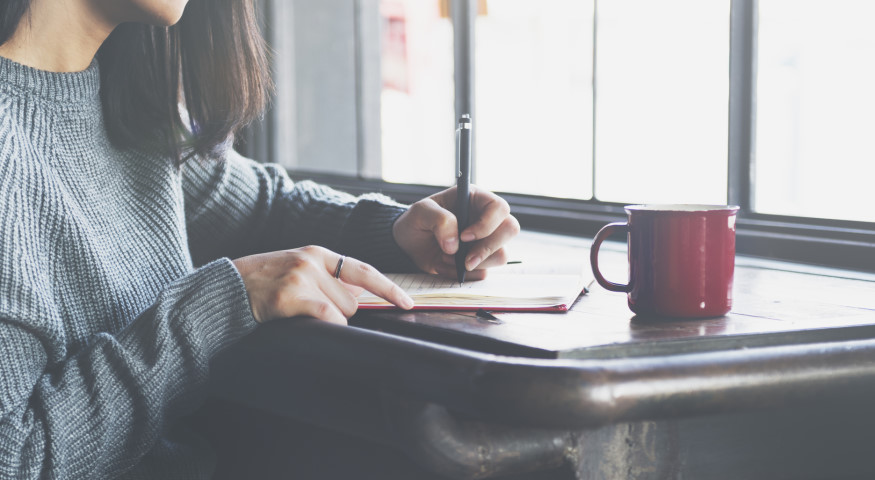Inspiring women series: Marie Curie

"Nothing in life is to be feared, it is only to be understood. Now is the time to understand more, so that we may fear less." ~Marie Curie
Inspiring Women Series: Marie Curie
Marie Curie, known as Maria Skłodowska was born in Warsaw, Poland, part of the Russian Empire, on November 7, 1867. She was the 5th and youngest child of well-known teachers Bronisława and Władysław Skłodowski.
The family had lost their property and fortunes through patriotic involvements in Polish national uprisings aimed at restoring Poland's independence. This condemned the subsequent generation, including Maria and her elder siblings, to a difficult struggle to get ahead in life.
Her father taught mathematics and physics, subjects that Maria was to pursue, and was also director of two Warsaw schools for boys. After Russian authorities eliminated laboratory instruction from the Polish schools, he brought much of the laboratory equipment home and instructed his children in its use. Eventually, he was fired by his Russian supervisors for pro-Polish sentiments and forced to take lower-paying jobs.
After the loss through bad investments, the family supplemented their income by lodging boys in the house. Maria's mother operated a prestigious Warsaw boarding school for girls; she resigned from the position after Maria was born. She died of tuberculosis in May 1878, when Maria was ten years old. Maria's oldest sibling, Zofia, had died of typhus contracted from a boarder less than three years earlier. Her father was an atheist; her mother a devout Catholic, but the deaths of her mother and sister caused her to give up Catholicism and become agnostic.
In 1891 she left Poland for France where she briefly lived with her sister and brother in law before renting a place closer to the university. With meagre resources, she kept warm in the winters wearing all the clothes she had, focusing so hard on her studies she often forgot to eat. Studying during the day and tutoring in the evenings still barely made ends meet.
In 1893, she was awarded a degree in physics and began work in an industrial laboratory while continuing her studies in Paris and with the aid of a fellowship was able to earn a second degree. During her scientific career in Paris she began to investigate the magnetic properties of various steels. That same year she met Pierre Curie, an instructor at The City of Paris Industrial Physics and Chemistry Higher Educational Institution (ESPCI Paris). He helped find her some laboratory space and their mutual interest in science brought them closer. They married in 1895.
Curie decided to look into uranium rays as a possible field of research for a thesis. She used an innovative technique to investigate samples. Fifteen years earlier, her husband and his brother had developed a version of the electrometer, a sensitive device for measuring electric charge. Using her husband's electrometer, she discovered that uranium rays caused the air around a sample to conduct electricity. Using this technique, her first result was the finding that the activity of the uranium compounds depended only on the quantity of uranium present. She hypothesized that the radiation was not the outcome of some interaction of molecules but must come from the atom itself. This hypothesis was an important step in disproving the assumption that atoms were indivisible.
In 1897, her daughter Irene was born. The Curies did not have a dedicated laboratory; most of their research was carried out in a converted shed next to ESPCI. The shed, formerly a medical school dissecting room, was poorly ventilated and not even waterproof. They were unaware of the detrimental effects of radiation exposure continuing unprotected work with radioactive substances. ESPCI did not sponsor her research, but she would receive subsidies from metallurgical and mining companies and from various organizations and governments
She began a systematic search for additional substances that emit radiation, and by 1898 she discovered that the element thorium was also radioactive. Pierre Curie was increasingly intrigued by her work. By mid-1898 he decided to drop his work on crystals and to join her.
The [research] idea [writes Reid] was her own; no one helped her formulate it, and although she took it to her husband for his opinion she clearly established her ownership of it. She later recorded the fact twice in her biography of her husband to ensure there was no chance whatever of any ambiguity. It [is] likely that already at this early stage of her career [she] realized that... many scientists would find it difficult to believe that a woman could be capable of the original work in which she was involved.
She was acutely aware of the importance of promptly publishing her discoveries and thus establishing her priority. Her paper, giving a brief and simple account of her work, was presented for her to the Académie on 12 April 1898 by her former professor.
At that time, no one else in the world of physics had noticed what Curie recorded in a sentence of her paper, describing how much greater were the activities of pitchblende and chalcolite than uranium itself: "The fact is very remarkable, and leads to the belief that these minerals may contain an element which is much more active than uranium." She later would recall how she felt "a passionate desire to verify this hypothesis as rapidly as possible."
On 14 April 1898, the Curies optimistically weighed out a 100-gram sample of pitchblende and ground it with a pestle and mortar. They did not realize at the time that what they were searching for was present in such minute quantities that they would eventually have to process tonnes of the ore.
Between 1898 and 1902, the Curies published, jointly or separately, a total of 32 scientific papers, including one that announced that, when exposed to radium, diseased, tumor-forming cells were destroyed faster than healthy cells.
In June 1903, Curie was awarded her doctorate from the University of Paris. That month the couple were invited to the Royal Institution in London to give a speech on radioactivity; being a woman, she was prevented from speaking, and Pierre Curie alone was allowed to.
In December 1903, the Royal Swedish Academy of Science awarded Pierre Curie, Marie Curie, and Henri Becquerel the Nobel Prize in Physics. "in recognition of the extraordinary services they have rendered by their joint researches on the radiation phenomena discovered by Professor Henri Becquerel." At first the committee had intended to honor only Pierre Curie and Henri Becquerel, but Pierre complained and Marie's name was added to the nomination. She was the first woman to be awarded a Nobel Prize.
In December 1904, Curie gave birth to their second daughter, Eve. On 19 April 1906, Pierre Curie was killed in a road accident. Walking across the street in heavy rain, he was struck by a horse-drawn vehicle and fell under its wheels, causing his skull to fracture.
On 13 May 1906 the physics department of the University of Paris decided to retain the chair that had been created for her late husband and offer it to Marie. She accepted it, hoping to create a world-class laboratory as a tribute to her husband Pierre. She was the first woman to become a professor at the University of Paris.
In 1910 Curie succeeded in isolating radium; she also defined an international standard for radioactive emissions that was eventually named for her and Pierre: the curie.
During World War I, Curie recognized that wounded soldiers were best served if operated upon as soon as possible. She saw a need for field radiological centers near the front lines to assist battlefield surgeons. After a quick study of radiology, anatomy, and automotive mechanics she procured X-ray equipment, vehicles, auxiliary generators, and developed mobile radiography units, which came to be popularly known as petites Curies ("Little Curies").
She became the director of the Red Cross Radiology Service and set up France's first military radiology center, operational by late 1914. Assisted at first by a military doctor and her 17-year-old daughter Irene. Curie directed the installation of 20 mobile radiological vehicles and another 200 radiological units at field hospitals in the first year of the war. Later, she began training other women as aides.
In 1915, Curie produced hollow needles containing "radium emanation", a colorless, radioactive gas given off by radium, later identified as radon, to be used for sterilizing infected tissue. She provided the radium from her own one-gram supply. It is estimated that over a million wounded soldiers were treated with her X-ray units.
She died July 4, 1934, from aplastic anaemia, believed to have been contracted from her long-term exposure to radiation.
Copied from Wikipedia

Comments
No comments currently. Be the first to comment!
Inspirational

▾ Other Recent Blog Posts ▾
All Rights Reserved 2025, Unraveling My Heart the Write Way - Admin Login | Alt Media Studios






